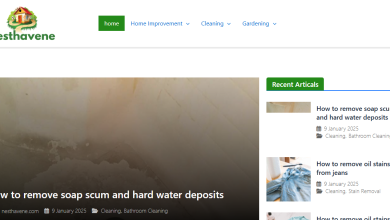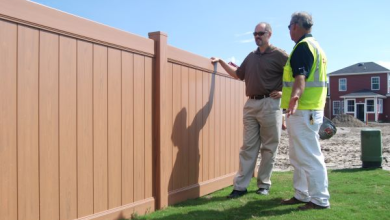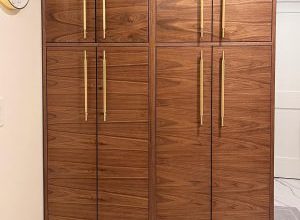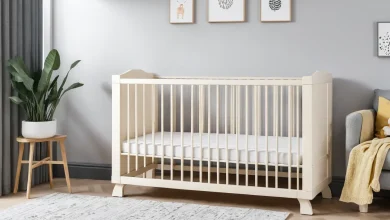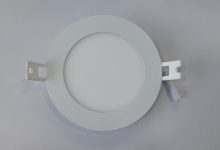How to Clean your Kitchen Floor
How to Clean your Kitchen Floor

Keeping your kitchen floor clean and sparkling is essential for maintaining a hygienic and inviting space. Start by sweeping the floor to remove any loose dirt or debris, ensuring you reach all the nooks and corners. Next, mix a solution of warm water and mild detergent in a bucket. Avoid using harsh chemicals that can damage your flooring over time. Dip a mop into the soapy water, wring it out well, and begin mopping the floor in gentle circular motions, working your way from one end to another.
For particularly stubborn stains or grime buildup, consider using natural ingredients like vinegar or baking soda. Vinegar is excellent for removing grease while baking soda acts as an abrasive cleaner that can eliminate tough stains without scratching your floors. To use vinegar, simply dilute it with equal parts of warm water and apply it directly to the stained area using a soft cloth or sponge; scrub gently until the stain disappears. Baking soda can be sprinkled on wet areas of your floor before scrubbing with the same method as for vinegar.
After cleaning your kitchen floor thoroughly, remember to dry it completely to prevent slips and falls caused by residual moisture. Open windows or turn on fans to facilitate faster drying time if necessary – this also helps eliminate any remaining odors from cleaning products used during the process. Lastly, make sure you take regular maintenance steps such as spot-cleaning spills immediately to minimize potential long-term damage. By following these cleaning tips regularly, not only will your kitchen floor keep shining but its
Cleaning your kitchen floor is essential for maintaining a clean and safe cooking environment. Here’s a step-by-step guide on how to clean your kitchen floor effectively:
Step 1: Gather Your Cleaning Supplies
Before you start, gather the necessary cleaning supplies:
- Broom or vacuum cleaner with a hard floor attachment
- Dustpan
- Mop and bucket
- Floor cleaner suitable for your floor type (e.g., hardwood, tile, laminate, vinyl)
- Warm water
- Microfiber mop or cloth
- Floor polish or wax (if applicable)
- Protective gloves (if using strong cleaning products)
- Scrub brush (for deep cleaning)
- Optional: Floor mat or rug
Step 2: Remove Loose Debris
Start by removing loose debris from the floor:
- Sweep or Vacuum: Use a broom or a vacuum cleaner with a hard floor setting to sweep up dirt, dust, and loose debris. If using a broom, use a dustpan to collect the debris Cleaning Companies in Qatar.
Step 3: Spot Clean Stains (if necessary)
If you have specific stains or spots on your kitchen floor, address them before proceeding with the general cleaning. Use an appropriate stain remover or cleaner for your floor type and follow the product’s instructions.
Step 4: Prepare Cleaning Solution
Prepare a cleaning solution suitable for your floor type. Here are some common solutions:
- Hardwood floors: Mix a hardwood floor cleaner with warm water according to the product’s instructions. Alternatively, you can create a DIY solution by mixing 1/4 cup of vinegar with a gallon of warm water.
- Tile and grout: Use a tile and grout cleaner or mix warm water with a few drops of dish soap and a 1/4 cup of vinegar.
- Laminate and vinyl floors: A mixture of warm water and a mild floor cleaner or a few drops of dish soap is suitable best cleaning company.
Step 5: Mop the Floor
Dip your mop or a microfiber cloth in the cleaning solution and wring it out well to avoid excessive moisture. Mop the floor in sections, working from one end to the other. Be sure not to oversaturate the floor, especially if you have hardwood or laminate floors, as excessive moisture can damage them.
Step 6: Dry the Floor
After mopping, use a clean, dry microfiber cloth to go over the floor and remove any excess moisture. This helps prevent water spots and streaks.
Step 7: Optional: Polish or Wax (if applicable)
If you have hardwood or certain types of tile floors, you may want to apply a floor polish or wax to maintain their shine and protection. Follow the manufacturer’s instructions for your specific product.
Step 8: Maintain and Preventive Measures
- Regularly sweep or vacuum your kitchen floor to prevent the buildup of dirt and debris.
- Place doormats at entryways to minimize the amount of dirt and moisture tracked onto your kitchen floor.
- Use furniture protectors or felt pads under the legs of kitchen chairs and tables to prevent scratches.
Different types of kitchen flooring may have specific care and maintenance requirements, so always refer to the manufacturer’s recommendations for your floor type. By following these general steps and maintaining a regular cleaning schedule, you can keep your kitchen floor clean and in good condition.
